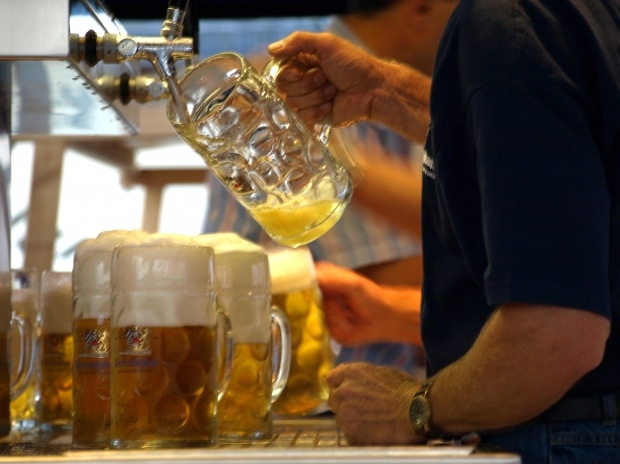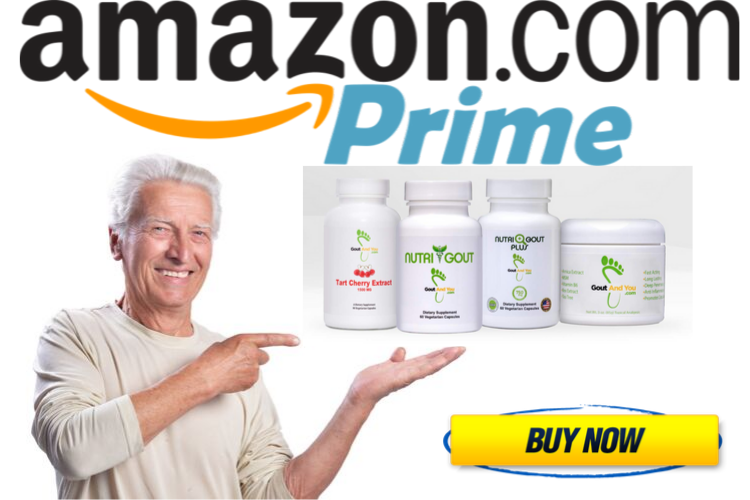
Gout and alcohol: Got gout and still drinking alcohol? Then you need to think again. Read on to discover how alcohol, and even some non-alcohol drinks, can raise your risk of gout and trigger painful gout flare-ups.
Gout and Alcohol
Many people just don’t realize how gout and alcohol are related, but what you drink has a strong influence on your health, including increasing incidents of gout. It’s not just gout and alcohol that are a bad mix either, some non-alcoholic drinks can cause gout too. Here’s the scoop on how what you drink can hurt you…
First though, let’s just remind ourselves of what gout is so that you can have a better understanding of the link between alcohol and gout:
Gout
This very painful condition is brought about when microscopic, needle-like, uric acid crystals are deposited in your joints and surrounding tissue. And you don’t have to be a doctor to understand how anything of substance getting into joints is going to cause you problems!
These crystals form out of high uric acid levels in your bloodstream, so anything you can do to keep your acid levels below the crystal precipitation point will help to prevent gout flares.
Uric acid is actually a byproduct of the metabolizing of chemical compounds called ‘purines’ which exist in our body cells, in our foods, and in some drinks, at varying concentrations.
Your kidneys normally process and excrete excess uric acid out of your body via urine. But if there’s too much uric acid being produced for them to handle, you can end up with high uric acid. So the more high-purine food and drink you consume the higher the risk of gout attacks.
Unfortunately many drinks, such as beer, are relatively high in purines that, when regularly consumed, set your body up for gout. Not only that, alcohol can interfere with your kidneys’ ability to process uric acid effectively.
And it may be worse for you if you are overweight and/or have high blood pressure – which many regular drinkers are and have – since studies have highlighted these as being very high risk gout factors.
Beer
Beer, to many people, is a staple of life. It’s ice-cold and refreshing, as well as a great way for people to share good times together. Unfortunately, beer also contains a high amount of purines, which are known to contribute to problems with gout.
In fact, according to a recent study, one of the largest of its kind, drinking just one beer a day may mean you’re nearly twice as likely (200%) to have gout than someone who avoids beer completely. Sad news for one of our favorite alcoholic beverages.
Low-Alcohol and Non-Alcoholic Beers
But what about low and non-alcoholic beers? Low / non-alcoholic beer is actually properly made beer that has most or all of its alcohol removed just before the bottling, canning or kegging stage.
Here are some interesting facts from Wikipedia:
“Low-alcohol beer (also called light beer, non-alcoholic beer, small beer, small ale, or near-beer) is beer with low alcohol content or no alcohol, which aim to reproduce the taste of beer without the inebriating effects of standard alcoholic brews. Most low-alcohol beers are lagers, but there are some low-alcohol ales.
In the United States, beverages containing less than 0.5% alcohol by volume (ABV) were legally called non-alcoholic, according to the now-defunct Volstead Act. Because of its very low alcohol content, non-alcoholic beer may be legally sold to minors in many American states.
In the United Kingdom, the following definitions apply by law (correct as of May 2007):
- No alcohol or alcohol-free: not more than 0.05% ABV
- Dealcoholised: over 0.05% but less than 0.5% ABV
- Low-alcohol: not more than 1.2% ABV
In some parts of the European Union, beer must contain no more than 0.5% ABV if it is labelled ‘alcohol-free’.
In Australia, the term “light beer” refers to any beer with less than 3% alcohol.
Spain is the main consumer and producer of low-alcohol beer.” More…
You can see that the definitions of low-alcohol, alcohol-free, and non-alcoholic, etc. differ according to where you live.
Overall though, the fact is that there’s very little alcohol in these types of beers. Apart from being good for your general health (compared to real beer) it also means that there’s little or no alcohol to disrupt your kidneys’ ability to manage your uric acid. And the purine content is relatively low compared to real beers.
All-in-all, these beers are much less of a risk. A word of caution though: this doesn’t mean you can go out and knock back bottle after bottle, because the alcohol and purine content will add-up. But, in my experience, their taste isn’t nearly as good as the real thing; so why bother at all?
Wines and Spirits
The study mentioned earlier – that found that a regular beer drinker was twice as likely to have gout compared to someone who didn’t drink – found that regular spirit/liquor drinkers had a higher risk of gout too (60%), but less than beer drinkers (200%). This is interesting because spirits have much higher alcohol levels. The researchers put this down to the higher purine content of beer.
The study also found that people who drank a moderate amount of wine per day had no increased risk. No one really knows why this should be the case, but the researchers thought that there may be some ‘protective’ element in the makeup of wine.
Mixed Alcoholic Drinks
Since alcohol disrupts your kidneys’ ability to manage uric acid, even mixed drinks can be problematic. When your kidneys aren’t flushing acids, they can back up in your bloodstream. If you happen to enjoy mixed drinks, alternate between alcoholic and “virgin” servings to reduce your intake. Be warned though, as any amount of alcohol can instigate an attack of gout, thus cutting down may not be enough.
Soda
If you deal with gout and drink soda, you now have yet another reason to quit reaching for the sugary beverage. Research has established an undeniable link between the fructose – often in the form of high fructose corn syrup (HFCS) – in soda and gout, showing that your risk is doubled and particularly dangerous if you are female.
Soda is also loaded with empty calories, so if you’re trying to manage your weight, find a substitute beverage ASAP.
Fruit Juice
Even natural fruit juices are often high in fructose, so they too are considered poor choices for people battling gout. If you love orange juice and simply can’t do without your morning glass, consider making it a small one.
Also, be very wary of opting for mixed alcoholic beverages which contain juice, such as a Screwdriver or Cosmopolitan, because you’ll be getting a double dose of grout aggravation.
Gout and Alcohol: The Verdict
Gout is such a painful condition to endure, while alcohol is easy to avoid. It’s only logical to conclude that the two do not go well together at all. Keep a list of everything that may contribute to your gout, and make a point of avoiding the things on it, even if you enjoy them.
Medical science has clearly established the link between gout and alcohol, especially beer and, to a lesser extent, spirits/liquors. These are best avoided or, at the very least, reduced considerably.
However, according to the research the odd glass of wine with your meal should not pose a problem; although everybody’s case is different, so you need to tread carefully.
Additionally, it’s important that you are aware of the other beverages that will cause issues with gout. Next time you’re thirsty, try reaching for nature’s best solution instead; refreshingly pure water.



